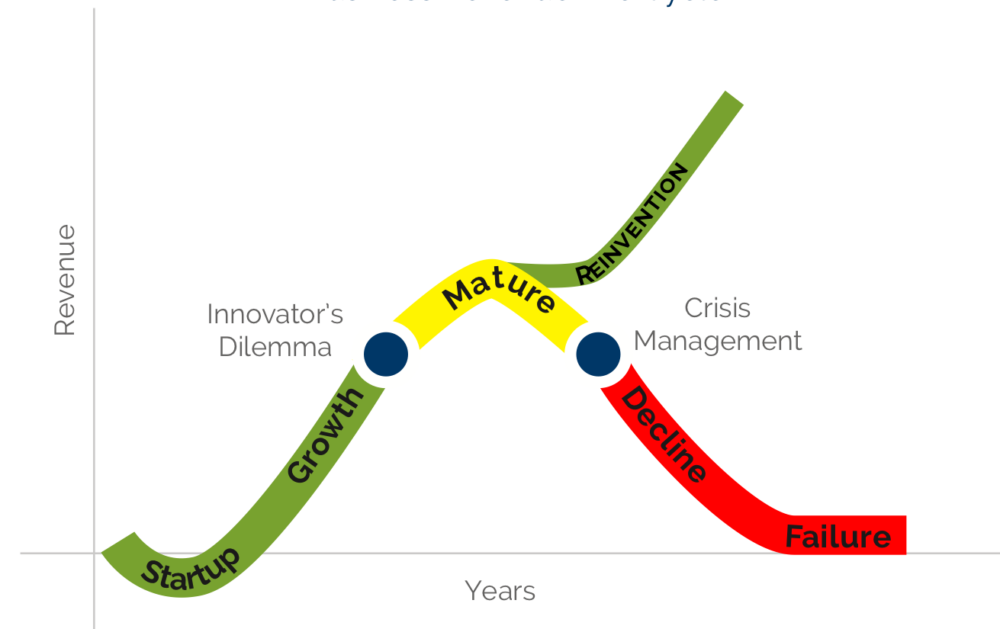The life cycle of consumer products is on constant repeat. Once it starts growing and gaining a large customer base, it risks disruption from another new and innovative product. These usurpers then grow and themselves are eventually displaced. This is the disruption pattern that Clayton Christensen calls “the Innovator’s Dilemma”, and it happens at a faster pace in technology products.

Here is the thing about products with large audiences: By the time you get there, your user base becomes part of the last generation. You will start seeing competition from startups who are targeting the new generation and growing their audience faster than you were at their age!
To stave off the Innovator Dilemma, incumbents need to organize and not interfere with smaller and more agile subsidiaries whose goals are to disrupt their large parents by attacking underserved markets, exploiting immature technologies, or building products that cannibalize the parent products.
Why Companies Struggle With Innovation
Large companies’ dynamics can create unwanted headwinds to these subsidiaries or teams through extending their management power grip, throttling their finance, assigning resources they would rather keep away… etc. Executive management at such organizations should be aware of that and facilitate a healthy environment for these innovative groups to grow and do their best to disrupt their parents.
Although the Innovator’s Dilemma is known to executives and not a secret, consumer product companies still get disrupted all the time because of the powerful inertia that occurs from their success. Such companies usually hold the following beliefs:
- They can get their customer base to move easily to the new product they create
- They can change the intent of their customers to fit their new product
- Most of the time they keep following the same business model and they think they can still monetize new products with the same model
While these beliefs look fine at the surface, it is often a deadly mistake to try and change the intent of your existing customer. Most customers use a product because they have a specific intent and that doesn’t necessarily hold true for your new product. You should be looking for a new market/personas, problem scenarios, and business model rather than trying to protect your existing customer base.
Solutions
As companies grow, they tend to move from innovation to scaling mentality and recruit people who are more specialized to end up working in silos and each team grows its area such as product, finance, HR, and marketing in a way to serve the current product line and existing customers.
Continue reading